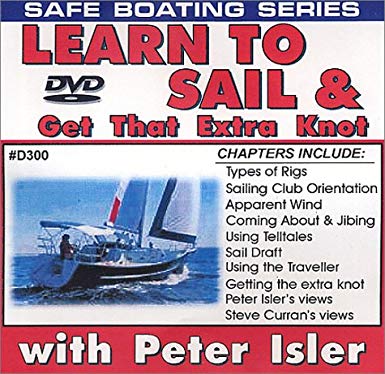| 00:00
Crew sailing on the Magic Lamp 01:44 Opening comments by
Gene Grossman, Magic Lamp Skipper: Differences between
the rigs (ketch, yawl, schooner, sloop, catboat) and
fractional rigs. Mast placement on the rigs (% of
length), description of headsails. Running and Standing
rigging (backstays, running backstays, headstay, jibstay,
forestay, upper and lower shrouds, spreaders,
chainplates). Running rigging (rope -vs- sheets)
16:20
Tony Lizza conducts new members' Orientation at Pacific
Sailing Club. Mainsail trim (vang, halyard, traveler,
outhaul & mainsheet) Ways to improve trim for
better speed under sail (halyard tension, outhaul
tension). Controlling depth of the sail. Performance
going to weather.
18:30
Trying Tony's suggestion under sail on the Magic Lamp.
19:15
back at Pacific Sailing to discuss outhaul tension with
Tony Lizza
20:10
Steve Curran (Transpac race winner): the effects, pro's
and con's of "Heeling" [wetted surface]. A boat
is designed to be sailed "on its lines."
Relationship of Heel, Wetted Surface and Skin Resistance
22:00
Tony Lizza: Traveler Position: enough "twist"
in the sail: "spilling wind" out of the sail.
23:00
Peter Isler: using the Traveler and MainSheet. Keeping
the mainsheet tight.
24:07
Tony Lizza: using the boom vang to flatten the sail.
Holding wind in the sail. Trimming the mainsheet: keeping
the top batten parallel to the boom.
25:20 Bob
Hoffman (head instructor at California Sailing Academy):
"Parts of the Sail" (luff, foot, leech) and how
to use the Traveler, Cunningham, Outhaul and Vang to
control each part of the sail (leech tension, luff
tension). Also, proper placement of the "draft"
28:55
Tony Lizza at Pacific Sailing: Further trips on sail
trim: Always trim the back of the mainsail Always trim
the front of the headsail; halyard tension; two genoa
sheets, genoa cars. Use the "telltales" to see
where the air movement is on your sail.
31:00 Bob
Hoffman: the Bernouli effect: (Lift, Side Force, Keel
Resistance)
33:10
Steve Curran: the "airfoil" effect of a sail,
plus value of tell-tales, and the "full sail is a
properly trimmed sail" myth.
35:30
Tony Lizza at Pacific Sailing: Draft and Depth of a
sail and how to adjust them both properly with the
Outhaul and Sheets and what the "Draft" is and
how to move it to the proper position on the sail. When
to move the draft (under what sailing conditions). The
Draft-forward position.
38:00
Peter Isler: understanding the wind. The theory behind
"Apparent Wind."
40:00 Bob
Hoffman: relationship between "true wind" and
"apparent wind;" trimming with the helm.
44:30
Pacific Sailing: Tony Lizza discusses the
"slot" between the mainsail and the headsail;
controlling the slot by moving the "genoa car"
on its track for headsail sheet control. Demonstration of
trimming techniques and how they affect the shape of the
sail, making a "flat foil" and changing the
slot position
48:00
Peter Isler: position of the "clew" corner of
the sail: close to the block or farther way. How to
bisect the angle - how to line up the jib sheet and where
to position the jib leads. Common errors we see people
making on other sailboats. A "feeling" for
close-hauled sailing. Close Reach and Beam Reach: the
easiest points of sail. Watching the tell-tales.
"When in doubt, let it out..." and constantly
re-check, to see that you're always just on the verge of
luffing.
52:10 Bob
Hoffman: "let the sails tell you when to
adjust." It's like a neon sign when a sail starts to
luff. It wants to be pulled in a little until the luffing
stops.
53:20
Peter Isler: whether or not a properly trimmed boat will
sail itself. The effects of keel type on weather helm or
lee helm. Why a sailboat really sails sideways. The
"angle of attack." The benefits of proper
education. "You never stop learning."
|
 Peter Isler (Dennis Conner's navigator in
America's Cup Races) and some other experts help give a
complete sailing course for beginners to intermediate
sailors.
Peter Isler (Dennis Conner's navigator in
America's Cup Races) and some other experts help give a
complete sailing course for beginners to intermediate
sailors.